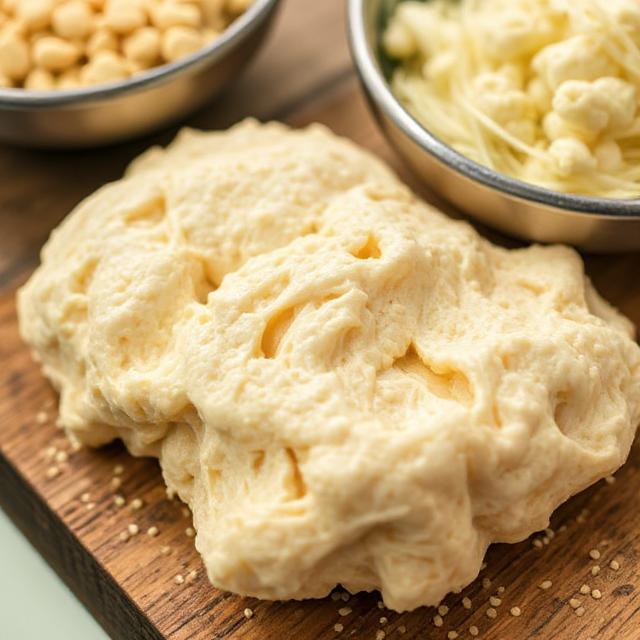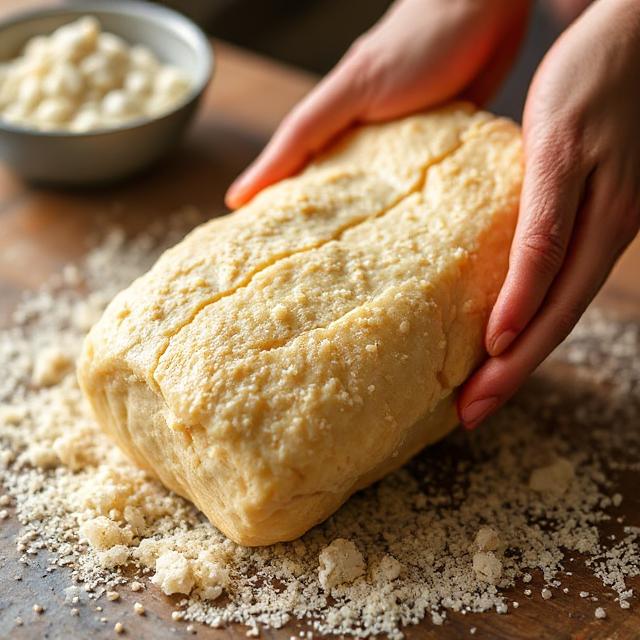Introduction: A New Dawn for Meatless Innovation
Imagine a savory steak or a smoky slice of bacon crafted not from animals, but from mold. Sounds unappetizing? Think again. Thanks to recent advancements in fermentation technology, koji-based meat alternatives are emerging as a game-changing force in the alternative protein industry. What was once an ancient mold used to brew soy sauce and miso is now stepping onto center stage as a sustainable, scalable, and delicious meat substitute. With growing consumer demand for ethical and eco-friendly food, koji (Aspergillus oryzae) may be the key ingredient in the next chapter of meatless innovation.
What is Koji?

Koji is a filamentous fungus, scientifically known as Aspergillus oryzae, used for centuries in East Asian fermentation traditions. It acts as a starter culture, breaking down starches and proteins into simpler compounds to enhance flavors in foods like:
- Soy sauce
- Miso
- Sake
- Mirin
- Rice vinegar
But koji does more than make delicious condiments. Its enzymatic activity unlocks umami flavors and complex textures that are strikingly meat-like. As researchers and food tech entrepreneurs delve deeper into microbial fermentation, koji has proven to be a rich candidate for meat analog development.
Why Koji Works for Meat Alternatives
Unlike plant-based proteins that often require extensive processing to mimic meat’s structure and flavor, koji naturally provides:
- Fibrous texture: Koji’s mycelial network creates fibrous, chewy structures similar to muscle tissue.
- Umami richness: Fermentation produces glutamates and nucleotides, creating an umami-rich flavor profile.
- High protein content: Koji can be cultivated to yield protein-dense biomass.
- Clean label potential: Minimal additives are needed compared to soy or pea-based products.
In short, koji delivers flavor and mouthfeel with fewer processing steps. This makes it attractive not just to consumers but also to food manufacturers aiming to reduce their environmental and supply chain burdens.
Fermentation 2.0: How Koji Is Grown

The production of koji-based meat alternatives involves a process similar to solid-state fermentation (SSF). Here’s how it works:
- Substrate preparation: A starchy base like rice, barley, or oats is steamed and cooled.
- Inoculation: Aspergillus oryzae spores are introduced to the substrate.
- Incubation: The substrate is kept at warm temperatures (~30°C) with controlled humidity for 48 to 72 hours.
- Harvesting: The mycelium-enriched substrate is harvested and processed into meat-like products.
This process is energy-efficient, requires no arable land, and can be adapted for upcycling food waste streams. It offers a low-footprint solution with the potential to decentralize protein production.
Companies Leading the Charge
Several startups are pioneering koji-based meat alternatives. Here are a few standouts:
1. Prime Roots (USA)
- Uses koji mycelium to create deli meats, bacon, and pâté.
- Products closely mimic the taste and texture of conventional meats.
- Raised over $50M in funding and partnered with chefs for flavor authenticity.
2. Nosh.bio (Germany)
- Focuses on koji-derived proteins for alternative burgers and nuggets.
- Claims high protein efficiency and exceptional mouthfeel.
- Offers proprietary fermentation tech for scalability.
3. Meati Foods (USA) (Honorable mention)
- Uses mycelium, though not koji, to craft whole-cut steak and chicken.
- Demonstrates market appetite for fungi-based protein formats.
These innovators are helping shape a future where fungal fermentation rivals or even outperforms animal agriculture.
Nutritional Profile
Koji-based meat is not just a novelty—it’s a nutritionally robust food source:
- Protein: Often 15-20g per 100g, comparable to chicken or pork.
- Fiber: Contains beta-glucans and other polysaccharides beneficial for gut health.
- Micronutrients: Rich in B vitamins, including B12 analogs, and iron.
- Cholesterol-free: A boon for heart health.
Importantly, the bioavailability of these nutrients is enhanced due to the fermentation process, which predigests complex molecules into more accessible forms.
Environmental Impact
Compared to traditional livestock, koji-based protein offers significant environmental benefits:
- Greenhouse gas emissions: Up to 90% lower than beef.
- Land use: No pastures needed; vertical fermentation systems require minimal space.
- Water usage: Far less than animal farming or even some plant crops.
- Waste reduction: Koji can grow on agricultural byproducts and food waste.
This aligns well with global climate goals and United Nations SDGs, making koji an attractive investment for impact-focused ventures.
Consumer Acceptance and Market Trends
A key question remains: will people eat mold? Surprisingly, the answer is trending toward yes. Koji carries a “clean culinary” legacy due to its use in Asian cuisine. Its fermentation heritage lends it credibility, especially among foodies, vegetarians, and flexitarians.
Trends favoring adoption:
- Rise of fermented food popularity
- Growing distrust of overprocessed plant-based meats
- Sustainability and health-conscious eating
- Culinary curiosity among Gen Z and Millennials
Retailers and foodservice chains are also beginning to include koji-based options, further validating market potential.
Challenges and Opportunities
Despite its promise, koji-based meat faces hurdles:
Challenges:
- Scaling solid-state fermentation for mass production
- Consumer education around fungi and mold-based foods
- Regulatory classification (novel food status in some regions)
- Shelf life and cold chain logistics
Opportunities:
- Partnering with fermentation CDMOs for scale-up
- Co-branding with chefs or cultural culinary figures
- Incorporating upcycled grains for sustainability claims
- Cross-over with precision fermentation for hybrid textures
The industry is still nascent, but rapid growth and funding indicate strong momentum.
Future Outlook
The future of koji-based meat alternatives looks bright. As food systems shift away from centralized animal agriculture, microbial and mycelial fermentation are poised to dominate protein innovation.
In the next 5–10 years, expect to see:
- Koji entering mainstream retail and QSR menus
- Hybrid products combining koji with pea or chickpea proteins
- Koji fermentation units integrated into urban food hubs
- Increased regulatory clarity and global adoption
Consumer tastes are changing, and the world is hungry for sustainable, high-quality protein. Koji delivers on every front—flavor, nutrition, scalability, and environmental impact.
Conclusion
Koji-based meat alternatives are not just a trendy novelty or culinary experiment. They are a scientifically grounded, environmentally sustainable, and culturally rich answer to the growing need for protein innovation. From ancient Japanese breweries to futuristic biotech kitchens, koji is finding new life as a cornerstone of Food 2.0.
It’s not just meatless. It’s mold-born magic, reimagined.
